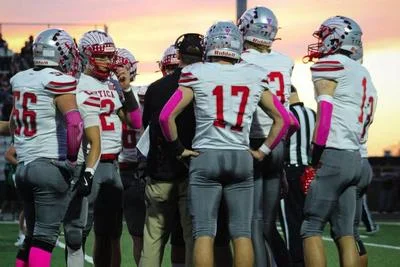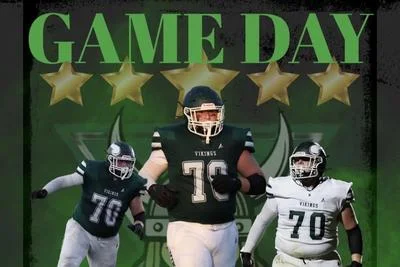Let’s talk the Indianapolis 500.
To many sports fans, May is race month. The Kentucky Derby and the Preakness are in the books, and leaving equine horsepower for twin-turbo horsepower, the Indianapolis 500 is on tap for Memorial Day. If the Kentucky Derby is ”the most exciting two minutes in sports,” then it can be argued that the Indy 500 is “the most exciting three hours in sports” (OK, I know, the Super Bowl is in that argument). Besides, the Indy 500 already has a marketing nickname: "The greatest spectacle in racing."
If you saw Mage win the Derby two weeks ago, watched National Treasure win the Preakness last weekend, and plan to watch the Indy 500 on Monday, you will see jockeys’ combustible silks traded for synthetic, fire-resistant, air-conditioned driver suits.
Comparison is silly, as they are two different sports, but let’s have some fun with it. Both are filled with tradition. There have been 149 Kentucky Derbies and 106 Indianapolis 500s.
Roughly 155,000 fans attend the Kentucky Derby and about 300,000 fans attend the Indy 500. Viewership is another story, as the horse race attracts close to 20 million TV watchers. That dwarfs Indy, as it usually draws about 5.5 million TV viewers.
Among the differences between equestrian and automotive races is moving up from one horsepower to 750 hp. Churchill Downs is a one-mile track and Indianapolis is a 2 1/2–mile lap. Top thoroughbreds can reach 40 mph and IndyCars can hit 240 mph. It takes a horse about one minute, 35 seconds to cover Churchill Downs’ mile track and they still have one-quarter mile left to run. At Indy, the 2 ½-mile one-lap distance can be covered in less than 39 seconds, but they have to run 200 laps to win the race.
Thoroughbred horses weigh 1,100 pounds and IndyCars weigh 1,600 pounds. At the Derby, jockeys weigh about 112-115 pounds while at Indy, male drivers average about 180 and female drivers often weigh from 100-125 pounds.
The Kentucky Derby winner (Mage) got $1.86 million of the $3 million purse. Last year, the Indy 500 winner (Marcus Ericsson) got $3 million of a total purse of $16 million.
Kentucky Derby TV coverage lasted six hours and featured other races, Indy 500 coverage on NBC will start at 11 a.m. and run through about 4 p.m.
Before the Kentucky Derby, they sing “My Old Kentucky Home,” and at Indy, they sing “Back Home in Indiana.”
They start the Kentucky Derby post parade with a celebrity saying, “Riders up.” The Indy starts with a celebrity saying, “Ladies and gentlemen, start your engines.” The Derby starts with the call, “The flag is up” and the Indy ends with the waving of a checkered flag.
The winning horse is draped in roses at Churchill Downs, and at the Brickyard, the winner drinks milk. Another way to look at it is that at the Derby, the popular drink is the mint julep, but milk is the prized drink at Indy.
Race positions are decided in the Derby by a lottery. At Indy, the starting grid is decided by the fastest qualifying times. In 106 Indy 500s, the pole position (position one, inside front row) has won 19 times. The No.1 post (inside on the rail) at the Derby has won 18 times in 149 races.
Winning horses never run the Derby again (races are for 3-year-old colts and fillies only), but winning jockeys do. Winning cars seldom run in the next Indy (though they are allowed to), but the drivers do.
Horse hooves are groomed and horseshoes are changed before the race, and often after the race. IndyCar tires CAN last 30,000 miles, but during the race, tires are changed five or six times, so figure the originals and six tire changes makes it about 70 miles per set. Pitstops and tire changes can win or lose a race, and an ideal Indy pitstop of changing four tires and filling an 18.5-gallon tank and maybe a wing adjustment can take seven seconds.
Horses fuel up with three to five pounds of concentrate grain (often timothy or oaten hay), protein, fat-supplemented high carbs, fish oil, rice bran and corn oil, and snack on alfalfa. After the race, five to seven pounds of cooked grain is a common meal. The main meal comes three to four hours before the race.
IndyCars are fully fueled just before the race, and the engines get about four miles per gallon. Shell’s 100% Renewable Race Fuel consists of second-generation ethanol derived from sugarcane waste, combined with other renewable components for an octane rating of 100, and a reduction of greenhouse emissions.
If you are among those who think the Indy 500 has no relevance, consider this. Inventions specifically developed and designed for, or prominently used first in the Indy 500, include rearview mirrors (in the very first Indy in 1911) and tire technology that started with rubber and cotton, grew to balloon tires, then wider-profile tires, composites, steel belts and tomorrow’s tire and tread advances.
Other Indy innovations that mainstreamed and were adapted for consumer use include seatbelts, superchargers, front-wheel drive and all-wheel drive, hydraulic brakes, disc brakes, aerodynamics, weight-saving metals and other automotive manufacturing materials, intercoolers, caution lights, helmets, turbine engines, bolt-on wings, ground effects, crash data recorders, steal and foam energy reduction barrier systems, and perhaps, tomorrow’s innovations.
Four-time winner A.J. Foyt said the 500 made American cars perform better. “We put it way over the line at Indianapolis, and believed if it works there, it will work on the highway,” Foyt said.
Auto-legend Mario Andretti said, “At Indy, we are the NASA of the production-car world … it is such a good test bed.” And fellow driver Dan Gurney said, ”Racing is like warfare: it accelerates the evolution of ideas.”
So, what about you? Did you watch the Derby and the Preakness? Are you planning on taking in the Belmont Stakes – last leg of horse racing’s triple crown, June 10? Are you going to catch any or all of the Indy 500? Or just peek in every once in a while? Is it a can’t-miss or full-miss event?
Let me know at Mike.Blake@mountvernonnews.com.







